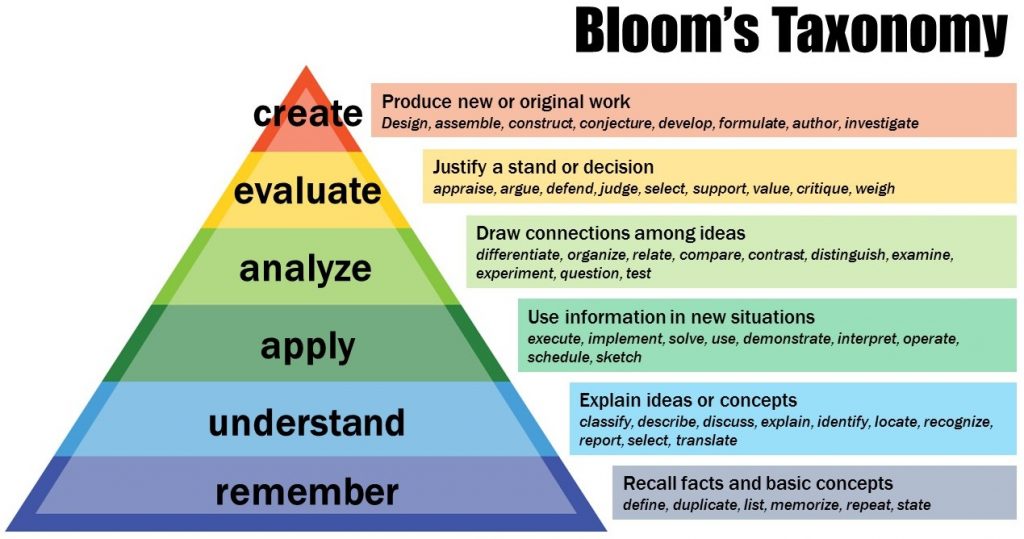Somethings are worth revisiting – frequently! We have previously done posts in the blog about Bloom’s Taxonomy, but I recently gave a presentation on using Bloom’s to build test questions on the appropriate learning level to a great group of CTE instructors. I thought it would be helpful to share again, both with those who are familiar with Bloom’s and those who may be unfamiliar with Blooms. Below are some of the informational highlights.
What is Bloom’s Taxonomy? Simply speaking, a tool used to define and distinguish different levels of human cognition – thinking, learning, and understanding.
How does Blooms Work? Before you can understand a concept, you must remember it. To apply a concept, you must first understand it. To evaluate a process, you must have analyzed it. To create an accurate conclusion, you must have completed a thorough evaluation.
What can you do with Bloom’s? Educators have typically used Bloom’s taxonomy to inform or guide the development of assessments (tests and other evaluations of student learning), curriculum (units, lessons, projects, and other learning activities), and instructional methods.
For example, if you are teaching an introductory course which is designed to build student’s foundational knowledge of a subject, your test questions should remain in the categories of remember, understand, and apply – known as lower order thinking skills.
If, however you are teaching a course where students are expected to have a solid foundation of terminology and certain processes, most of your test questions should range into higher order thinking skills – analyze, evaluate, and possibly create.
Remember, Blooms is just a tool to help you develop measurable course objectives, test questions on the right cognitive level, and program outcomes. I’ve included a few tools to get you started.

